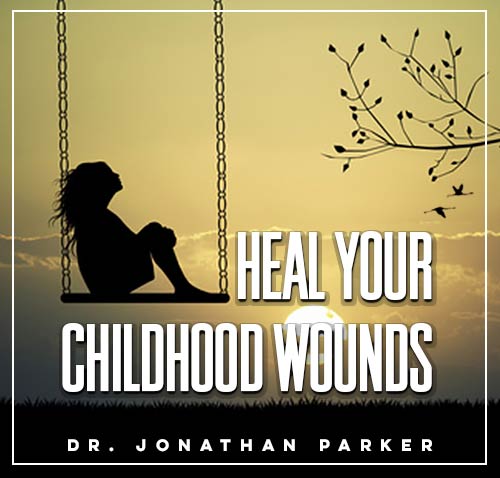Childhood Emotional Healing: Find Inner Strength

Hey there, amazing readers! 🖐️ Just a quick note: yes, we know there are a lot of ads here. Trust us, we get it—it’s not the prettiest look, but they help us keep this blog alive and kicking. Those pesky little ads cover the costs of all the behind-the-scenes magic, from hosting and tech stuff to creating content we hope you’ll love.
We’re committed to delivering quality posts, and your support (even just sticking around despite the ads) means everything to us. So, bear with us, and thanks for helping us keep the good vibes rolling. Now, on to the fun stuff! 😉
TRANSLATE BUTTON AT THE END OF THE ARTICLE
A Quick Overview
Childhood emotional healing is a crucial process that helps children overcome past traumas, develop resilience, and build inner strength.
It involves recognizing emotional wounds, addressing them through various techniques, and creating a safe space for healing.
By supporting children on their healing journey, caregivers can empower them to express their emotions, learn coping mechanisms, and nurture resilience.
Seeking professional help when needed is also essential in providing children with the necessary tools to heal emotionally.
In this article, we will delve deeper into the importance of childhood emotional healing and explore ways to support children in finding inner strength.
Understanding Childhood Emotional Healing
Childhood emotional healing refers to the process of addressing and processing emotional wounds that children may have experienced in their past.
These wounds can stem from various sources such as parental neglect, abuse, bullying, loss, or trauma.
Healing these emotional wounds is essential for children to move past their negative experiences, develop healthy coping mechanisms, and lead fulfilling lives.
It involves acknowledging and validating the child’s emotions, providing them with a safe space to express themselves, and guiding them through the healing process.
Importance of Healing Childhood Trauma
Healing childhood trauma is crucial for a child’s overall well-being and mental health.
Untreated trauma can have long-lasting effects on a child’s emotional, psychological, and physical development.
It can lead to issues such as anxiety, depression, low self-esteem, and difficulties in forming healthy relationships.
By addressing and healing childhood trauma, children can learn to regulate their emotions, manage stress effectively, and build resilience in the face of adversity.
Providing children with the necessary support and resources to heal from their past traumas is essential in helping them thrive in the future.
Recognizing Emotional Wounds in Children
Recognizing emotional wounds in children can be challenging as they may manifest in various ways.
Some common signs of emotional wounds in children include:
Withdrawal or isolation
Aggressive behavior
Anxiety or depression
Difficulty in trusting others
Low self-esteem
Regression in behavior or development
It is important for caregivers to pay attention to these signs and provide children with the necessary support and guidance to address their emotional wounds effectively.
Techniques for Healing Childhood Emotions
There are various techniques that can be used to help children heal their emotional wounds and develop inner strength.
Some of these techniques include:
Art therapy: Allowing children to express themselves creatively through art can help them process their emotions.
Play therapy: Using play as a medium for children to explore and work through their feelings in a safe and supportive environment.
Mindfulness and meditation: Teaching children mindfulness techniques can help them learn to regulate their emotions and improve their mental well-being.
By incorporating these techniques into a child’s healing journey, caregivers can support them in finding inner strength and emotional balance.
Building Inner Strength in Children
Building inner strength in children is essential for their overall resilience and well-being.
Inner strength allows children to navigate challenges, setbacks, and adversity with resilience and determination.
To help children build inner strength, caregivers can:
Encourage a growth mindset: Teach children to view challenges as opportunities for growth and learning.
Foster self-confidence: Provide children with opportunities to succeed and build confidence in their abilities.
Teach problem-solving skills: Help children develop effective strategies for managing stress and overcoming obstacles.
By empowering children to build inner strength, caregivers can help them navigate life’s challenges with confidence and resilience.
Creating a Safe Space for Emotional Healing
Creating a safe space for emotional healing is essential for children to feel comfortable expressing their emotions and working through their past traumas.
Caregivers can create a safe space by:
Listening actively and empathetically to children’s feelings.
Validating children’s emotions and experiences.
Providing a non-judgmental and supportive environment for children to express themselves.
By creating a safe space for emotional healing, caregivers can help children feel secure and supported as they navigate their healing journey.
Seeking Professional Help for Trauma
In some cases, childhood trauma may require professional intervention to heal effectively.
Seeking help from therapists, counselors, or mental health professionals can provide children with the necessary tools and support to address their emotional wounds.
These professionals can offer specialized therapy techniques, guidance, and resources to help children heal from their past traumas and develop healthy coping mechanisms.
It is important for caregivers to recognize when professional help is needed and to seek assistance for their children when necessary.
Encouraging Emotional Expression in Children
Encouraging emotional expression in children is essential for helping them process their feelings and emotions effectively.
Caregivers can encourage emotional expression by:
Validating children’s feelings and emotions.
Encouraging open communication and honest conversations.
Teaching children healthy ways to express their emotions, such as through journaling or art.
By encouraging emotional expression, caregivers can help children feel heard, understood, and supported in their emotional healing journey.
Teaching Coping Mechanisms to Children
Teaching children healthy coping mechanisms is crucial for helping them manage stress, regulate their emotions, and navigate challenges effectively.
Some coping mechanisms that caregivers can teach children include:
Deep breathing exercises to calm the mind and body.
Positive self-talk to boost self-esteem and confidence.
Engaging in physical activities to release pent-up emotions and stress.
By teaching children healthy coping mechanisms, caregivers can empower them to cope with difficult emotions and situations in a positive and constructive manner.
Nurturing Resilience in Childhood
Nurturing resilience in childhood is essential for helping children bounce back from setbacks, adapt to change, and thrive in adverse situations.
Caregivers can nurture resilience in children by:
Encouraging problem-solving skills and critical thinking.
Teaching children to view challenges as opportunities for growth.
Providing a supportive and nurturing environment for children to develop resilience.
By nurturing resilience in childhood, caregivers can help children develop the inner strength and emotional fortitude to overcome obstacles and thrive in the face of adversity.
Benefits of Emotional Healing in Children
Emotional healing in children offers a wide range of benefits for their overall well-being and development.
Some of the benefits of emotional healing in children include:
Improved mental health and emotional well-being.
Enhanced self-esteem and self-confidence.
Better coping mechanisms for managing stress and challenges.
Stronger relationships with others and improved social skills.
By supporting children on their emotional healing journey, caregivers can help them experience these benefits and lead happier, healthier lives.
Supporting Children on Their Healing Journey
Supporting children on their healing journey requires patience, understanding, and empathy.
Caregivers can support children by:
Listening actively and validating their emotions.
Providing a safe space for children to express themselves.
Encouraging healthy coping mechanisms and self-care practices.
Seeking professional help when needed.
By supporting children on their healing journey, caregivers can empower them to find inner strength, heal from past traumas, and thrive in the face of adversity.
Conclusion
Childhood emotional healing is a vital process that helps children overcome past traumas, develop resilience, and build inner strength.
By recognizing emotional wounds, providing a safe space for healing, and offering support and guidance, caregivers can empower children to navigate their healing journey effectively.
Encouraging emotional expression, teaching coping mechanisms, and nurturing resilience are essential in helping children build inner strength and emotional well-being.
By supporting children on their healing journey, caregivers can help them heal from past traumas, develop healthy coping mechanisms, and lead fulfilling lives.

The Enlightenment Journey is a remarkable collection of writings authored by a distinguished group of experts in the fields of spirituality, new age, and esoteric knowledge.
This anthology features a diverse assembly of well-experienced authors who bring their profound insights and credible perspectives to the forefront.
Each contributor possesses a wealth of knowledge and wisdom, making them authorities in their respective domains.
Together, they offer readers a transformative journey into the realms of spiritual growth, self-discovery, and esoteric enlightenment.
The Enlightenment Journey is a testament to the collective expertise of these luminaries, providing readers with a rich tapestry of ideas and information to illuminate their spiritual path.
Our Diverse Expertise 🌟
While our primary focus is on spirituality and esotericism, we are equally passionate about exploring a wide range of other topics and niches 🌍📚. Our experienced team is dedicated to delivering high-quality, informative content across various subjects ✨.
To ensure we provide the most accurate and valuable insights, we collaborate with trusted experts in their respective domains 🧑🏫👩🏫. This allows us to offer well-rounded perspectives and knowledge to our readers.
Our blog originally focused on spirituality and metaphysics, but we’ve since expanded to cover a wide range of niches. Don’t worry—we continue to publish a lot of articles on spirituality! Frequently visit our blog to explore our diverse content and stay tuned for more insightful reads.







